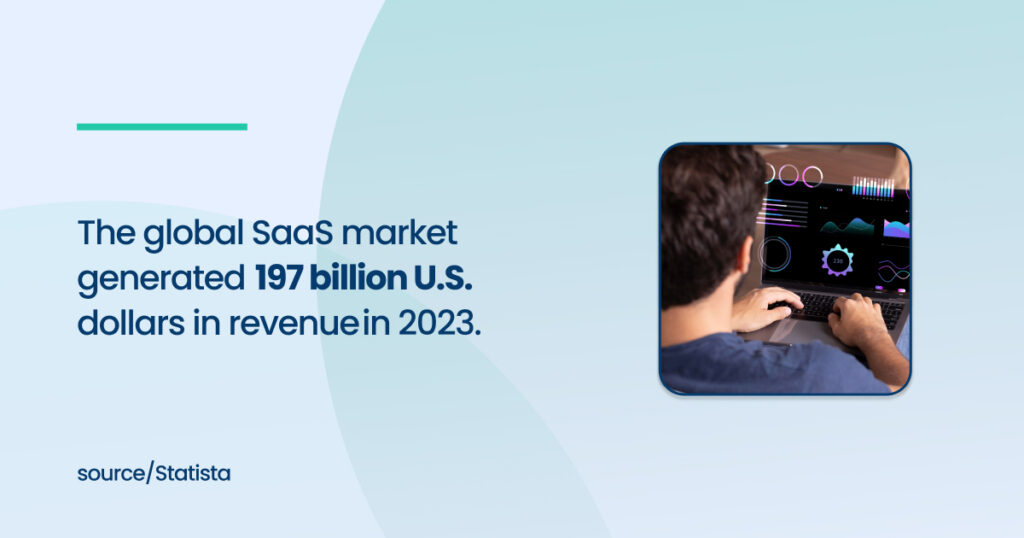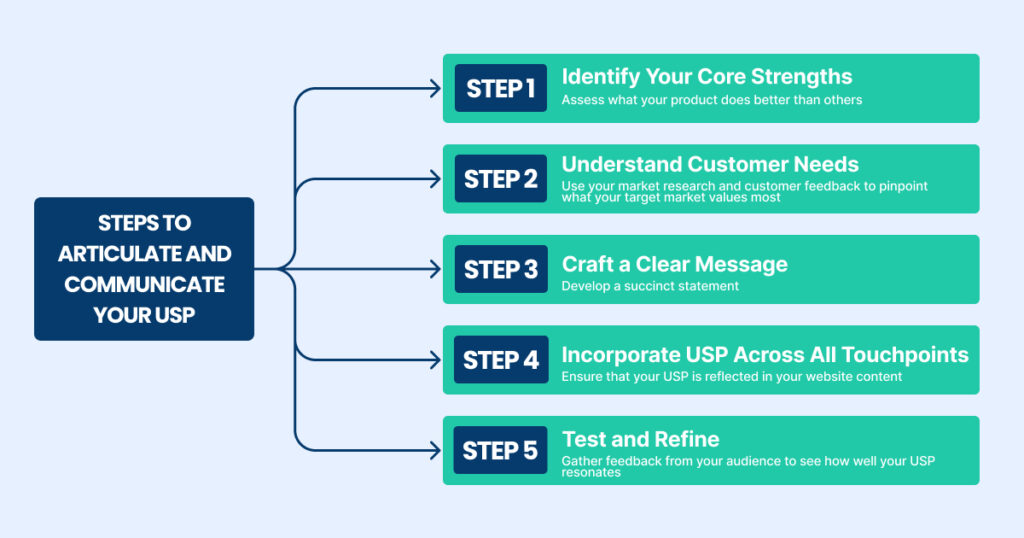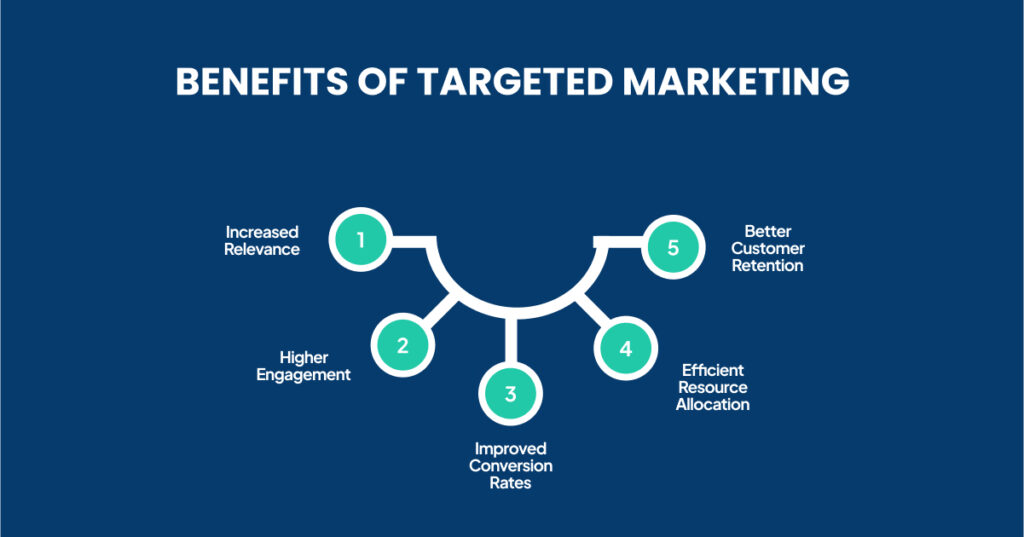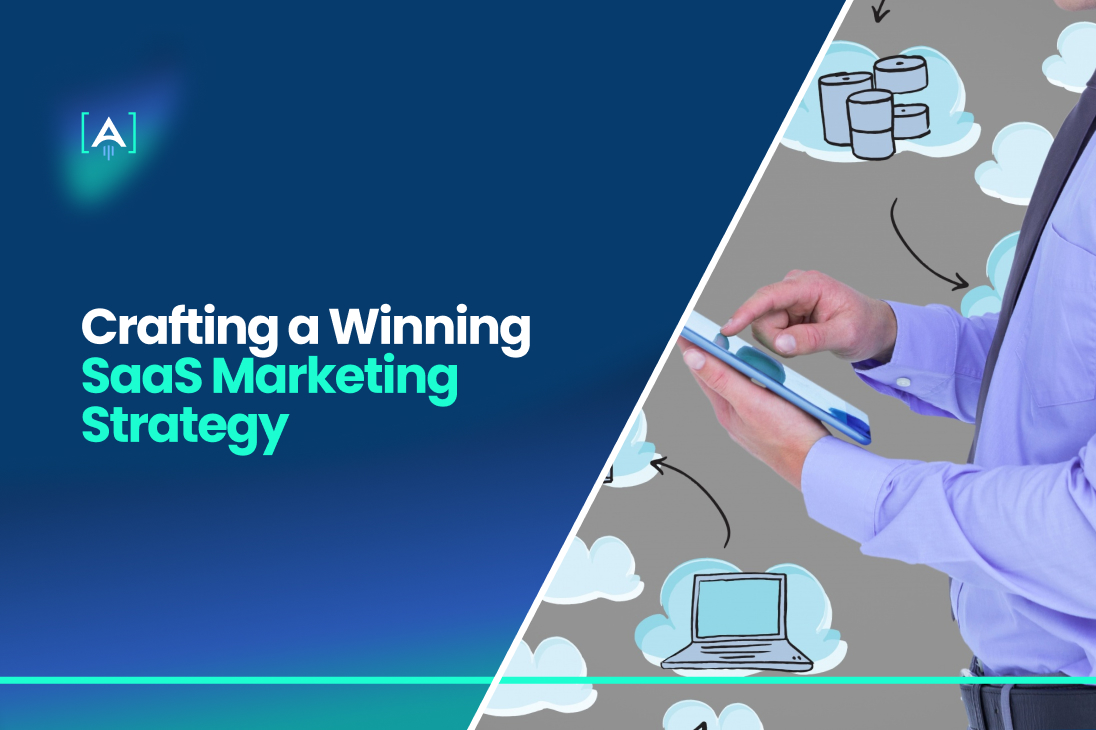SaaS marketing strategy is the core of your SaaS business success.
You should consider this since it aligns marketing efforts with your target market’s specific needs and behaviors.
Understanding your audience and leveraging effective marketing strategies can help you attract, engage, and convert leads more efficiently.

A SaaS marketing agency with a successful SaaS marketing strategy focuses on personalized approaches that differentiate your product in a competitive landscape, ensuring sustainable growth and customer retention.
The blog post will cover the critical components and actionable steps necessary to develop an effective marketing plan specified for the SaaS industry.
Crafting a Winning SaaS Marketing Strategy
In the ever-evolving world of SaaS marketing, having a well-defined strategy is paramount to achieving and sustaining success.
To craft a winning SaaS marketing strategy, it’s essential to understand the market landscape, define your unique selling proposition, and accurately identify and segment your target audience. This comprehensive guide explores these core components in detail.
Understanding the SaaS Market Landscape
Grasping the dynamics of the SaaS market is the first step toward developing a successful SaaS marketing strategy.
This involves analyzing current market trends, understanding the competitive landscape, and clearly defining what sets your product apart.
Analyzing Market Trends and Competitors
How to Conduct Market Research
Effective market research is the backbone of any solid business strategy.
Collect data from various sources, including industry reports, customer surveys, and social media platforms. Tools like Google Trends, Statista, and market-specific analytics platforms can offer important insights into emerging trends and consumer behaviors.
Source: Ahrefs
Understanding what SaaS is and the specific nuances of B2B SaaS will guide your research. Focus on identifying key trends that could impact your market, such as new technologies, shifting customer preferences, or changes in regulatory environments.
Engage with industry forums, attend webinars, and subscribe to newsletters to stay updated with the latest developments in the SaaS space.
Identifying and Benchmarking Against Competitors
Once you grasp the market trends, the next step is to analyze your competitors. Clarify your direct and indirect competitors and understand their marketing strategies.
Use tools like SEMrush, Ahrefs, or SpyFu to analyze their search engine optimization (SEO) efforts, keywords they rank for, and backlink profiles.
Benchmarking against competitors involves evaluating their strengths and weaknesses in product features, pricing, customer service, and marketing channels.
Create a competitive matrix to visually compare these aspects and identify gaps where your product can excel. Look at their social media marketing tactics, the type of content they consume, and how they engage with their audience. This will help you understand what works in the market and where you can carve out a competitive advantage.
Defining Your Unique Selling Proposition (USP)
Importance of Differentiating Your SaaS Product
In a crowded SaaS market, differentiation is key to attracting and retaining customers. Your Unique Selling Proposition (USP) makes your product stand out.
It’s the unique value that your product offers that others don’t, and it should be the cornerstone of your SaaS marketing strategy.
A compelling USP highlights your product’s benefits and addresses your target audience’s specific needs and pain points. It should be clear, concise, and communicated consistently across all your marketing channels.
Whether you offer innovative features, superior customer support, or more flexible pricing, your USP is what persuades potential customers to choose your product over others.
Steps to Articulate and Communicate Your USP

Identifying and Segmenting Your Target Audience
Understanding your audience is essential to any successful SaaS marketing effort.
A detailed understanding of your customers allows you to connect your marketing strategies to meet their needs and preferences, driving more effective engagement and higher conversion rates.
Creating Detailed Customer Personas
Steps to Develop Personas Based on Demographics, Behaviors, and Needs
Creating detailed customer personas involves synthesizing data from various sources to represent different segments of your target market. Here’s how you can develop these personas:
- Collect Demographic Data: Gather information about your customers’ age, gender, location, job title, and industry. Apply to tools like Google Analytics, CRM systems, and customer surveys to collect this data.
- Analyze Behavioral Data: Look at how different segments interact with your product and marketing campaigns. This includes website behavior, purchase history, and engagement with content.
Tools like Hotjar or Crazy Egg can provide insights into user behavior. - Identify Needs and Pain Points: Understand the specific challenges and needs that your product addresses for each segment.
Conduct interviews, read customer reviews, and use social listening tools to gather this information. - Create Persona Profiles: Combine this data into comprehensive profiles that include a name, photo, demographic details, behavior patterns, and a summary of their needs and goals.
Each persona should introduce a distinct segment of your audience. - Validate and Refine: Share these personas with your team and gather feedback to ensure they are accurate and useful.Update them based on new data and insights.
How Personas Influence Marketing Strategies
Personas are instrumental in shaping your SaaS marketing strategy.
Source: HubSpot
They help you understand what motivates your customers and how best to communicate with them. With detailed personas, you can:
- Tailor Your Messaging: Make messages that resonate with specific segments, addressing their unique needs and highlighting the most important benefits.
- Optimize Marketing Channels: Choose the most effective marketing channels for reaching each persona. For example, decision-makers in tech companies might prefer detailed whitepapers or case studies, while younger, tech-savvy users might engage more with interactive content on social media platforms.
- Personalize Customer Experience: Use personas to guide the development of personalized marketing and sales interactions, creating more relevant and engaging experiences.
- Refine Product Development: Align your product features and updates with the needs and preferences of your key personas, ensuring that your SaaS product continues to meet and exceed customer expectations.
Segmenting Your Market for Better Precision
Techniques for Segmenting Your Audience
Segmenting your audience enables you to deliver more targeted and effective SaaS marketing. Here are some techniques for prioritization:
- Demographic Segmentation: Separate your audience based on demographic factors such as age, gender, income, education level, and job title. This helps you understand your customers and how to reach them effectively.
- Behavioral Segmentation: Group your audience according to their behavior, such as purchasing history, usage patterns, and engagement with your content. This type of segmentation provides insights into how customers interact with your SaaS product and what drives their decisions.
- Geographic Segmentation: Segment your market based on location, country, region, or city. This can be particularly useful for B2B SaaS companies targeting businesses in specific areas or regions.
- Psychographic Segmentation: This involves grouping your audience based on their lifestyle, values, attitudes, and interests. Understanding these factors helps in creating more personalized and emotionally resonant marketing messages.
- Firmographic Segmentation: For B2B SaaS companies, segmenting by firmographics, such as industry, company size, and revenue, can offer deeper insights into how to tailor your marketing strategies to different types of businesses.
Benefits of Targeted Marketing in the SaaS Industry
Targeted marketing offers several advantages for SaaS companies.

Implementing Effective Lead Generation Tactics
In the competitive realm of SaaS, generating quality leads is crucial for growth and sustainability. Effective lead generation tactics are the backbone of a robust SaaS marketing strategy, ensuring your pipeline is filled with prospective customers genuinely interested in your product.
This involves utilizing well-designed landing pages and forms, increasing the power of email marketing, and building a strong social media presence. Each component is vital in attracting, engaging, and converting leads into paying customers.
Utilizing Landing Pages and Forms
Designing and optimizing SaaS landing pages is essential for converting visitors into leads. A well-crafted landing page should be clear, concise, and focused on a single objective—encouraging visitors to take a specific action, such as signing up for a free trial or downloading a whitepaper.
Source: HubSpot
To maximize conversions, your landing page should include a compelling headline immediately grabbing attention and a strong value proposition highlighting your SaaS provider’s benefits.
Visual elements such as high-quality images or videos can enhance engagement, while a clean, uncluttered design ensures that the call-to-action (CTA) stands out.
SaaS marketing agencies often emphasize the importance of A/B testing various versions of landing pages to determine which elements perform best.
This iterative method allows you to continually refine your pages based on user behavior and SaaS metrics. In addition to the landing page, your sign-up forms should be optimized for ease of use and minimal friction.
Forms should be as short as possible, requesting only essential information to avoid deterring potential leads. Clear, descriptive labels and inline validation can enhance user experience, while incentives like free trials or exclusive content can boost form submissions. Ensuring that forms are mobile-friendly is critical, as many users will access your pages via mobile devices.
Harnessing the Power of Email Marketing
Email marketing is still a strong tool in the SaaS marketing arsenal, providing a direct line to prospective and existing customers. Creating and segmenting your email list is the first step in creating targeted campaigns that drive engagement and conversions.
Source: Statista
Begin by collecting email addresses through various touchpoints, such as landing pages, webinars, and content downloads. Segment your list based on criteria like user behavior, purchase history, and demographic information to tailor your messages to specific audiences.
Effective email marketing also relies on continuous optimization based on SaaS metrics. Analyzing rates, click-through rates, and conversion rates provides insights into what types of content and messaging resonate most with your audience.
Analyzing these metrics enables you to improve your email strategies and improve their effectiveness over time.
Leveraging Social Media Channels
Social media is an essential distribution channel for SaaS marketing strategies, allowing you to connect with potential customers where they spend significant time. Choosing the right social platforms for your SaaS provider depends on where your target audience is most active.
Source: HubSpot
LinkedIn is particularly effective for B2B SaaS providers looking to engage with professionals and decision-makers, while platforms like Twitter and Facebook offer broader reach and engagement opportunities. SaaS SEO can be beneficial for this.
Building a strong social media existence requires a strategic approach to content marketing and engagement. Regularly posting valuable and correspondent content, such as industry insights, product updates, and educational resources, helps establish your market as a thought leader and keeps your audience engaged.
Source: Omnius
Visual content, including infographics, videos, and images, tends to perform well and can increase engagement and shares.
Engaging with your audience is equally important. Responding promptly to comments and messages, participating in industry discussions, and using social listening tools to monitor mentions and feedback can foster community and trust around your brand. Running targeted social media ads can amplify your reach and attract qualified leads.
These ads can be tailored based on demographic information, interests, and behaviors, allowing you to reach users probably to be interested in your product.
Social media marketing also offers valuable insights into audience preferences and behaviors, which can inform your overall SaaS marketing strategy.
Source: Statista
By analyzing engagement metrics and feedback from social media interactions, you can better understand what content verbalizes with your audience and how to refine your approach to better meet their needs.
Engaging and Nurturing Leads
Engaging and nurturing leads is essential for converting insights into loyal customers in the highly competitive SaaS market. A successful SaaS marketing strategy must focus on continuous engagement through automation, personalized communication, and exceptional customer support.
These elements are crucial in maintaining interest and building strong relationships with your audience, ultimately driving long-term growth and customer retention.
Implementing Marketing Automation
Marketing automation is a crucial tool that streamlines your SaaS marketing efforts, allowing you to engage with leads efficiently and effectively at scale.
Automation platforms like HubSpot, Marketo, and ActiveCampaign provide tools for automating various aspects of your marketing strategy, from email campaigns to lead scoring and customer segmentation.
These platforms free up your marketing team to concentrate on more strategic initiatives by automating repetitive tasks. For example, automated email workflows can nurture leads by sending targeted messages according to user behavior and engagement.
If a lead downloads a whitepaper, the system can automatically follow up with similar content or a demo invitation, keeping the conversation going without manual intervention. Similarly, drip campaigns can guide prospects through the buyer’s journey, reaching the right message at the right time.
The advantages of marketing automation extend beyond efficiency. It also enables more personalized and timely interactions, which is crucial for lead nurturing.
Automated systems can segment leads based on their actions and preferences, ensuring they receive content most relevant to their needs.
This connected approach increases engagement and conversion rates, as leads are probably to respond positively to messages that matches with their specific challenges and interests.
Moreover, marketing automation tools often come with robust analytics capabilities that help you identify key performance indicators and measure the effectiveness of your campaigns.
By tracking segments such as open rates, click-through rates, and conversion rates, you can gain insights into what works and what doesn’t, enabling you to refine your approach for better results continually.
Using Personalization to Enhance Customer Experience
Personalization is the essence of effective SaaS marketing. In a landscape where customers are bombarded with generic messages, personalized communication can significantly enhance the customer experience and set your brand apart.
Techniques for personalizing content and communication range from easy tactics, like addressing the customer by name, to more sophisticated approaches, such as delivering dynamic content based on user behavior and preferences.
One effective personalization technique is to use data from your CRM and marketing automation web pages to segment your audience and connect your messages accordingly. For instance, you can make segments according to factors like industry, job role, or the specific challenges a customer faces and then send targeted content that addresses these areas.
If a segment of your audience consists of small business owners looking to streamline their operations, you might send them case studies or blog posts that highlight how your SaaS product has helped similar businesses.
Examples of effective personalization in SaaS marketing include personalized onboarding experiences that guide new users through the setup process based on their specific use cases or dynamic email content that changes according to the recipient’s behavior and preferences.
For instance, users who frequently access your analytics features might receive emails focused on advanced reporting capabilities and tips on getting the most out of your software.
Providing Exceptional Customer Assistance
Exceptional customer support is a critical element of any SaaS marketing strategy.
It helps retain customers and fosters loyalty and advocacy, which can drive organic growth through word-of-mouth referrals. In a competitive market, high-quality support can be a significant differentiator and a key factor in a customer’s decision to stay with your service.
Effective customer support should be timely, accessible, and knowledgeable. Offering multiple distribution channels for support, for example live chat, email, and phone, ensures that customers can reach out in the most convenient way.
Tools like Zendesk or Intercom can help manage these channels and provide a seamless support experience.
Additionally, integrating a robust knowledge base or FAQ section on your website allows customers to look for answers to common questions on their own, which can reduce the burden on your assistance team and improve customer satisfaction.
Integrating customer support into your SaaS marketing efforts can enhance your overall strategy.
For example, insights gained from customer support interactions can inform your content marketing and product advancement efforts. If customers often ask about a particular feature, you can create detailed guides or tutorials to address this need or even consider enhancing that feature in future updates.
Moreover, proactive support strategies, such as reaching out to customers who haven’t logged in for a while or offering assistance during their trial period, can prevent churn and encourage deeper engagement with your product.
This proactive approach shows that you value your customers’ success and are committed to helping them get the most out of your service.
Partner with [A] Growth Agency For Your Marketing Strategy
In the fast-paced and ever-evolving world of SaaS, a unique and strategic approach to marketing is essential for standing out in a crowded marketplace.
Partnering with [A] Growth Agency can provide the expertise and tools needed to craft a winning SaaS marketing strategy
We believe in the power of data to drive effective marketing decisions. Our approach to SaaS marketing strategy is rooted in data-driven insights and analytics.
Ready to elevate your marketing strategy?

